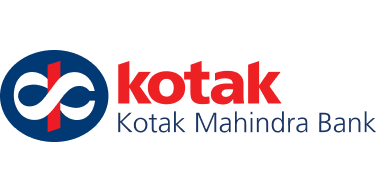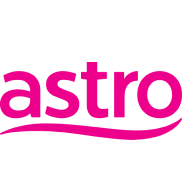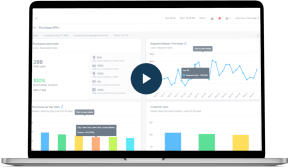SMS marketing is a critical channel for brands seeking direct, high-impact customer engagement, and e-commerce businesses are leading the charge. Over 70% of consumers in the United States have signed up to receive SMS messages from businesses, reflecting the growing trust and popularity of this channel.
As per a report by Gartner, text messages have open and response rates of 98% and 45%, respectively, surpassing the figures of 20% and 6% for email messages. This positions text messaging as a highly effective means of reaching the targeted audience. To tap into this audience, brands must improve their SMS delivery rates and achieve the optimal value from SMS marketing campaigns.
In this article, you’ll learn exactly what SMS delivery rate means, how to calculate and benchmark it, and why it’s vital for your campaigns. We’ll break down the key factors affecting SMS deliverability and share industry best practices to improve your results. This guide will give you actionable insights to ensure your messages land where they matter most, on your customers’ phones.
What Is SMS Delivery Rate?
SMS delivery rate refers to the percentage of text messages that successfully reach the intended recipients’ mobile devices. It serves as a crucial metric for businesses using SMS marketing because it reflects both the quality of their contact database and the reliability of their SMS service provider.
A high delivery rate means that most of your messages are being received, which directly leads to better customer engagement and improved campaign outcomes.
Maintaining a high delivery rate is vital for the success of SMS campaigns because it guarantees that your messages actually reach the right audience. Without strong delivery, even the most compelling messages won’t have the desired impact.
Calculating SMS Delivery Rate
To determine your SMS delivery rate, you need to compare the number of messages that were successfully delivered to recipients against the total number of messages you attempted to send. This is typically expressed as a percentage, giving you a clear view of how many of your SMS messages are actually reaching your audience.
SMS Delivery Rate (%) = (Number of Delivered Messages / Total Number of Messages Sent) x 100
For example, if you sent 1,200 SMS messages and 1,080 were successfully delivered, your SMS delivery rate would be:
(1,080÷1,200)×100=90%
This simple calculation helps you monitor and optimize your SMS campaigns by highlighting potential issues with message delivery.
A Note on Delivery Rate vs. Delivery Latency
While the delivery rate tells you how many messages were successfully delivered, the delivery latency tells you how quickly they were delivered. For time-sensitive campaigns, like OTPs or flash sales, even a minor delay can reduce effectiveness. Monitoring both metrics gives you a more complete view of your campaign’s reach and timeliness.
What Is a Good SMS Delivery Rate?
A good SMS delivery rate usually ranges between 95% and 98%, reflecting SMS’s high reliability compared to other channels like email. Industries such as e-commerce, finance, healthcare, and tech typically achieve delivery rates at or above this level. If your delivery rate falls below 95%, it’s a sign to review your contact lists, message formatting, or SMS provider to improve performance. Aim to keep your SMS delivery rate above 98% for optimal campaign success.
Key Factors Affecting SMS Delivery Rate and Deliverability
There are various technical and operational factors that can impact whether your SMS messages reach their intended recipients. Here are some of the most critical elements:
List Hygiene & Contact Validity
Maintaining a clean and up-to-date contact list is essential for high SMS delivery rates. Invalid, outdated, or duplicate phone numbers can result in failed deliveries and wasted spending. Regularly validate and clean your database using various tools.
Carrier Spam Filters & Message Formatting
Mobile carriers use sophisticated spam filters that analyze message content and sending patterns. Messages that contain spammy keywords, excessive capitalization, suspicious links, or are sent in large, identical batches are more likely to be blocked. Hence, crafting clear, concise, and personalized messages while avoiding known spam triggers helps your campaigns bypass these filters and reach the inbox.
Unverified Sender IDs and Grey Routes
Using unregistered sender IDs or relying on unofficial “grey routes” can significantly reduce deliverability. Carriers may block or deprioritize messages from unverified sources to prevent spam and fraud. Register your sender ID, and use direct, authorized carrier routes to ensure higher trust and more consistent message delivery.
Read more: What is an SMS Short Code, & How Does it Work?
Poor Timing and Volume Spikes
Sending large volumes of messages in a short time or at unusual hours can trigger carrier filtering or throttling, leading to delivery delays or blocks. Gradually ramp up your send volume and schedule messages at optimal times to maintain a healthy sender reputation and avoid delivery issues.
Lack of Compliance with Regulations
Non-compliance with regulations, such as failing to obtain proper opt-in consent, ignoring opt-out requests, or violating local messaging laws, can result in blocked messages, legal penalties, and damage to your sender reputation. Follow all relevant compliance guidelines to ensure your SMS campaigns are delivered successfully.
Quality of SMS Service Provider
The technical reliability and carrier relationships of your SMS gateway significantly affect deliverability. Providers with direct carrier connections, redundant networks, and high uptime ensure more consistent delivery. Ensure you are choosing a reliable and Tier 1 SMS provider.
Geographical and Carrier Restrictions
Be aware of regional and carrier-specific rules, as some countries and carriers have unique filtering or routing requirements that can affect deliverability, especially for international campaigns.
For global campaigns, it’s also essential to account for regional telecom frameworks. Markets such as India, Brazil, and the UAE have strict policies regarding sender ID registration, template whitelisting, and pre-approvals. Failing to comply can result in mass message blocking, even if your content and list hygiene are in order.
How to Improve SMS Deliverability: 10 Best Practices
Improving SMS deliverability is essential to ensure your messages reach your audience and drive engagement. Here are ten proven best practices to help you optimize your SMS campaigns:
1. Regularly Clean and Validate Your Contact Lists
Maintaining a healthy contact list is the foundation of high SMS delivery rates. Routinely audit your lists to remove invalid, duplicate, or inactive numbers, and use validation tools to verify new contacts before adding them. This proactive approach not only prevents wasted spending on undeliverable messages but also protects your sender reputation with carriers.
2. Use Tier-1 SMS Gateways or Direct Carrier Routes
The reliability of your SMS campaigns depends heavily on your messaging provider. Tier-1 SMS gateways and direct carrier routes ensure your messages take the most trusted and efficient paths to recipients, reducing the risk of delays, filtering, or message loss. Partnering with a reputable provider also gives you access to better support and delivery insights.
3. Register Sender ID and Templates (Especially in DLT-Regulated Markets)
In regions with strict telecom regulations, such as India’s Distributed Ledger Technology (DLT) framework, registering your sender ID and message templates is not just recommended; it’s required. This process authenticates your brand, builds trust with mobile carriers, and minimizes the risk of your messages being blocked or flagged as spam.
4. Avoid Spam Triggers in Message Content
Carriers deploy advanced filters to detect and block spammy messages. To avoid being flagged, steer clear of excessive capitalization, repeated special characters, and suspicious links. Use clear, relevant language and avoid common spam trigger words. Testing your content before sending it can help you identify and fix potential issues.
5. Personalize Your SMS Campaigns
Personalization goes beyond using a recipient’s name. Segment your audience based on behavior, preferences, or location, and tailor your messages accordingly. Personalized SMS campaigns are more likely to capture attention, avoid spam filters, and generate higher engagement and response rates.
6. Send Messages at Optimal Times
Timing plays a crucial role in both deliverability and engagement. Analyze your audience’s habits to determine when they are most likely to read messages, and avoid sending during late-night hours or peak carrier congestion times. Staggering sends and respecting time zones can also help prevent carrier throttling and improve overall delivery rates.
7. Prioritize User Consent and Privacy Compliance
Compliance is non-negotiable in SMS marketing. Always collect explicit opt-in consent before messaging, and make it easy for recipients to opt out at any time. Promptly honoring opt-out requests is essential to avoid carrier blocks, legal penalties, and damage to your brand reputation.
In addition to opt-in and opt-out practices, marketers must follow regional privacy laws such as the TCPA (U.S.), GDPR (EU), CAN-SPAM, CTIA guidelines, and national DND registries. Non-compliance can result in blocked messages, heavy fines, or long-term sender reputation damage. Make sure your SMS platform supports country-specific regulations like India’s DLT framework, and maintain clear records of user consent. Respecting privacy safeguards both your deliverability and your brand trust.
8. Test Message Formats and Shorten Character Count
Not all devices and carriers handle SMS the same way. Test different message formats, including plain text and Unicode, to ensure compatibility. Keep your messages concise. For standard GSM characters, stay under 160 characters to avoid splitting or truncation, which can negatively impact both deliverability and readability. If you’re using Unicode characters (e.g., emojis or non-Latin scripts), messages may split after 70 characters. Always test for compatibility.
9. Monitor Delivery Reports & Error Codes
Delivery reports and error codes are invaluable for diagnosing and resolving deliverability issues. Regularly review these metrics to identify patterns, such as frequent failures to specific carriers or regions. Address these issues promptly to maintain high delivery rates and campaign effectiveness.
10. Track and Benchmark KPIs Beyond Delivery
While SMS delivery rate is a key metric, it’s important to monitor additional KPIs like open rates, click-through rates, conversions, and opt-outs. Benchmarking these SMS metrics over time provides a holistic view of your campaign performance and helps you identify areas for further optimization.
Bonus: Common SMS Delivery Report Codes and What They Mean
Monitoring delivery rates is one thing, but understanding why messages fail is another. Delivery reports often contain error codes that can reveal the root cause of deliverability issues. Here are a few common ones:
- DND (Do Not Disturb): The recipient has opted out of promotional messages through a national DND registry or equivalent.
- Failed: The message wasn’t delivered due to an invalid or unreachable phone number.
- Throttled: Your sending speed exceeded the carrier’s limit, causing delays or message drops.
- Expired: The message was not delivered within the carrier’s valid timeframe (usually 24–72 hours).
Reviewing and interpreting these reports can help you spot delivery patterns and take corrective actions that preserve your campaign performance.
Power Up Your SMS Marketing Strategy With CleverTap
Optimizing SMS deliverability is just the foundation of a great SMS campaign. To truly unlock the potential of your SMS marketing plan, you need a platform that combines automation, personalization, and deep analytics.
CleverTap empowers marketers to orchestrate sophisticated, high-impact SMS campaigns that drive engagement, conversions, and long-term loyalty.
With advanced capabilities like AI-powered journey optimization via IntelliNODE and real-time RFM segmentation, CleverTap ensures every SMS is not just timely but highly personalized and goal-aligned. Whether you’re targeting potential loyalists or preventing churn, CleverTap tailors your message to each user’s behavior and value segment.
Here’s how CleverTap helps you take your SMS strategy to the next level:
Behavior-Triggered Messages
CleverTap enables you to send SMS messages automatically in response to real-time user actions, like cart abandonment, app inactivity, or key milestones in the customer journey. By delivering messages at the exact moment they’re most relevant, you can boost engagement and nudge users toward conversion with greater precision.
AI-Optimized Send Times
With CleverTap’s AI-powered “Best Time to Send” feature, your SMS campaigns are intelligently scheduled based on each user’s unique engagement patterns. This ensures your messages land when recipients are most likely to see and act on them, maximizing open rates and campaign effectiveness without manual intervention.
See how the world’s largest South Asian streaming platform used CleverTap’s ‘Best Time’ feature to boost SMS campaign CTR by 60%.
Omnichannel Journey Integration
CleverTap’s customer journey orchestration platform allows you to weave SMS seamlessly into multi-channel customer journeys, coordinating messaging across push notifications, email, WhatsApp, and more. This unified approach ensures your communications are consistent, contextually relevant, and responsive to each user’s preferences and behaviors.
Real-Time Performance Analytics
Gain instant insights into your SMS campaign performance with CleverTap’s real-time analytics dashboards. Monitor delivery rates, engagement metrics, and conversions as they happen, empowering your team to quickly identify opportunities, troubleshoot issues, and optimize strategy for better results.
Additionally, CleverTap’s auto-linking functionality automatically appends UTM and custom parameters to SMS links, enabling accurate attribution and deeper ROI visibility without manual effort.
Discover how Neobank North Loop doubled its engagement rate using CleverTap’s campaign A/B testing.
Personalized at Scale
CleverTap’s robust segmentation capabilities and personalization tool let you tailor SMS content to individual user profiles, behaviors, and lifecycle stages. By delivering highly relevant, personalized messages at scale, you can drive deeper engagement and foster stronger customer relationships.
Smart Fallback to SMS
Ensure your critical communications are never missed; if a user doesn’t respond to a push notification or another channel, CleverTap automatically triggers an SMS as a fallback. This smart redundancy maximizes the likelihood that your messages reach users, regardless of their preferred channel or device.
To support a seamless and reliable SMS strategy globally, CleverTap also incorporates carrier-level compliance and message frequency governance. This protects brand reputation while maximizing message deliverability and user trust.
No-Code Campaign Setup
CleverTap’s intuitive, no-code campaign builder empowers marketers to design, launch, and manage SMS campaigns and automations without technical support. With a simple drag-and-drop interface, you can quickly build sophisticated journeys and respond to market needs in real time.
SMS may be one of the oldest digital channels, but with CleverTap, it becomes one of the smartest. Backed by AI, compliance, and deep customer intelligence, CleverTap transforms SMS from a standalone tactic to a strategic pillar of your customer engagement arsenal.
Drive smarter SMS campaigns with CleverTap’s automation and analytics engine.
Conclusion
Achieving a high SMS delivery rate is essential for ensuring your messages reach and engage your audience. By understanding the key factors that impact deliverability and following proven best practices, you can maximize the effectiveness of every SMS campaign.
Ready to take your SMS marketing to the next level? With CleverTap, you get advanced automation, personalization, and analytics tools that make it easy to deliver the right message to the right user every time. Book a demo with CleverTap today!
Sagar Hatekar 
Leads product managementExpert in Marketing Analytics & Engagement platforms.
Free Customer Engagement Guides
Join our newsletter for actionable tips and proven strategies to grow your business and engage your customers.














































